Around this time of the year, bluebonnets in Texas receive a lot of attention, and rightly so. When they bloom they are spectacular.

However, not to push the attention of these extraordinary flowers aside, if you extend the spotlight just a little you may be surprised at the additional shades of blue hue that emerge from the ground in and around our State wildflower.
For more on Texas wildflowers and bluebonnets scroll down to our FLOWERS IN FOCUS in our blog post Wild About Texas Wildflowers
For Longhorns for sale GVRlonghorns.com
For a glimpse of wildflowers that fall within the same color range as bluebonnets,
scroll below.
Make no mistake, the list is extensive but here are 6 that caught our eye.
(all photos taken at Green Valley Ranch)
1. Texas Bluestar
Amsonia ciliata
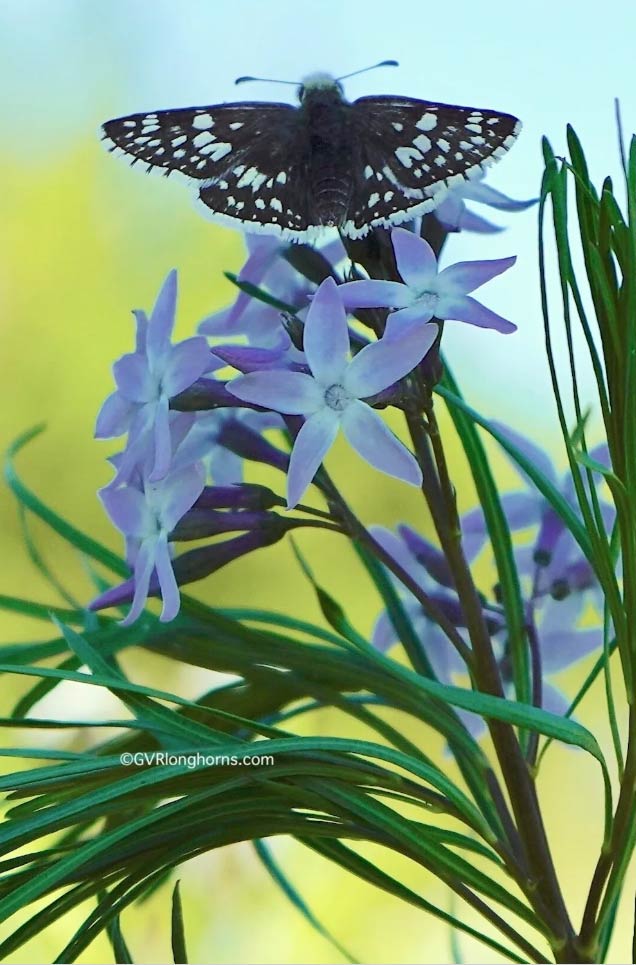
The Texas Bluestar is included in the Dogbane family and produces a bitter milky sap characteristic of similar species. A few well known plants in the Dogbane family include Vinca, Oleandar and Hemp Dogbane. A few leaves of Oleandar can kill an adult. Hemp Dogbane is listed as poisonous to cattle by the USDA Agricultural Research Service. the milky sap that it produces contains a toxic alkaloid. Fortunately, for now, the USDA also excludes Texas as an area where Hemp Dogbane is found.
Another plant in the Dogbane family is Milkweed.
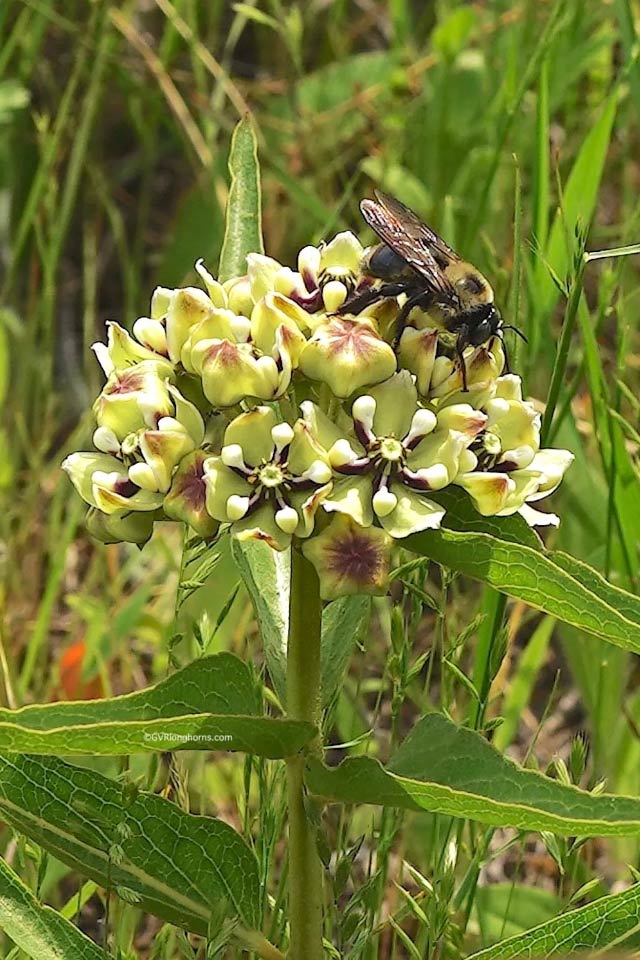
2. Texas Vervain
Verbena Halei
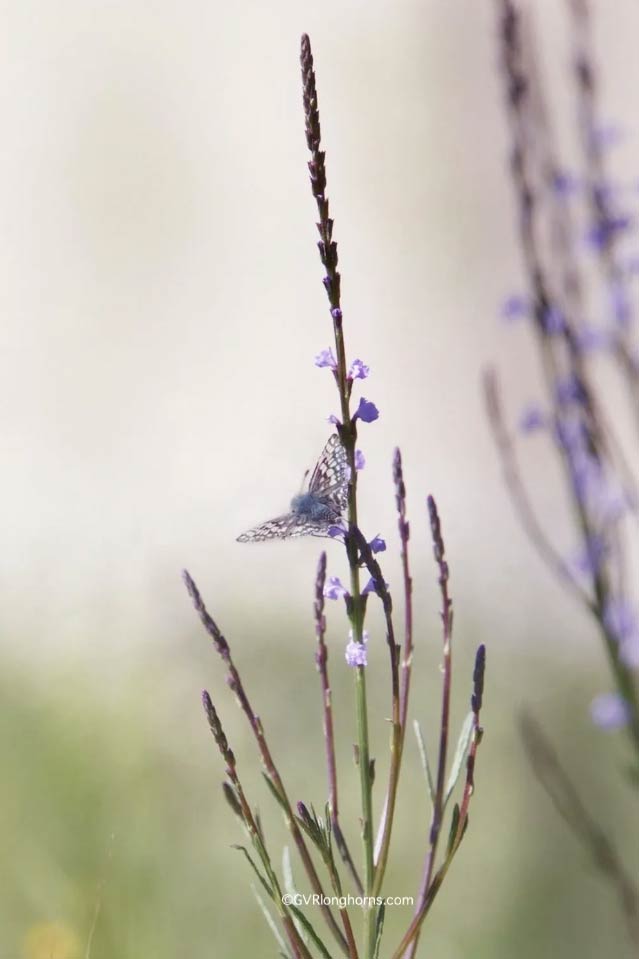
Its slim uncomplicated appearance gives no hint of this plants significance tracing back to ancient times.
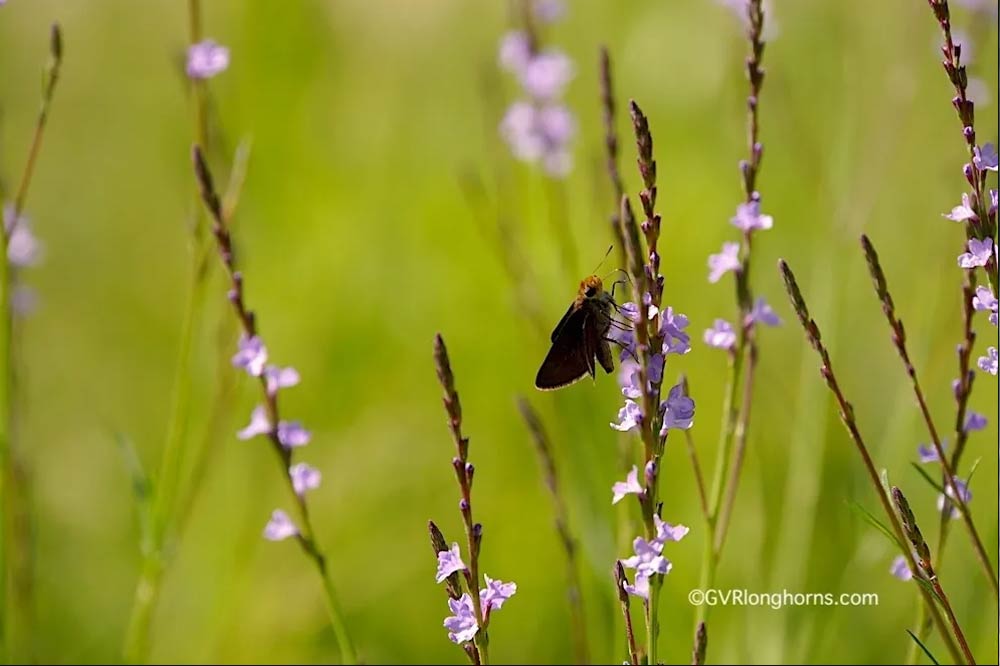
Here are numerous interesting findings :-
* In Ancient Egypt, Vervain was referred to as the ‘Tears of Isis’.
* It is believed to have been used as a healing remedy for Christ’s wounds on the Cross and therefore gained an additional nickname as ‘the herb of the cross’
* The Vervain plant is prominent in many other ancient cultures too including Ancient Rome,Ancient Greece, the Druids , the Aztecs and many Native American tribes.
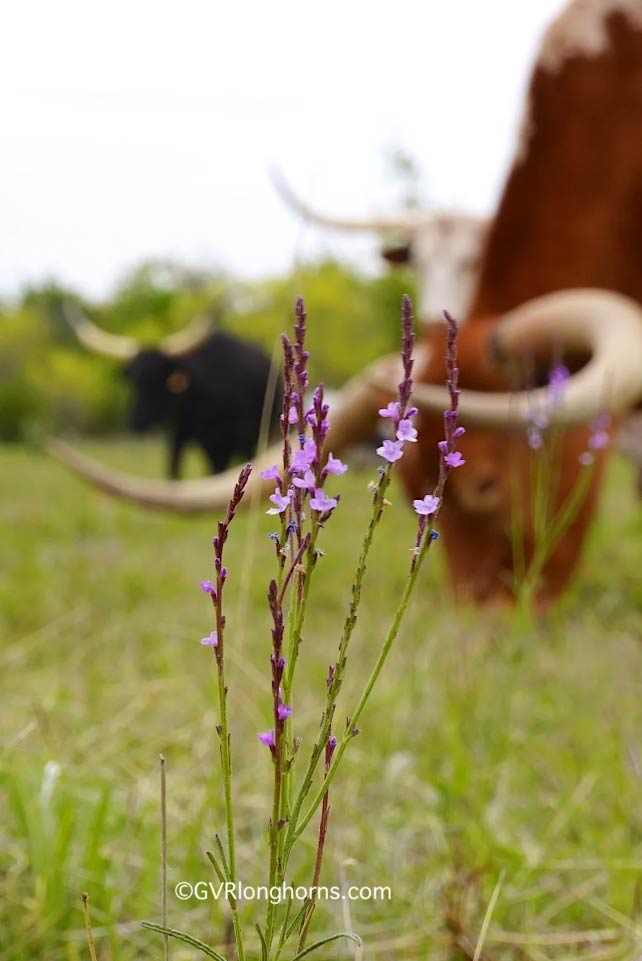
* The healing powers of Vervain were included in the Writings and practices of Saint Hiidegard von Bingen ( 1098-1179 ), a Benedictine Abbess and larger than life influencer of her time.
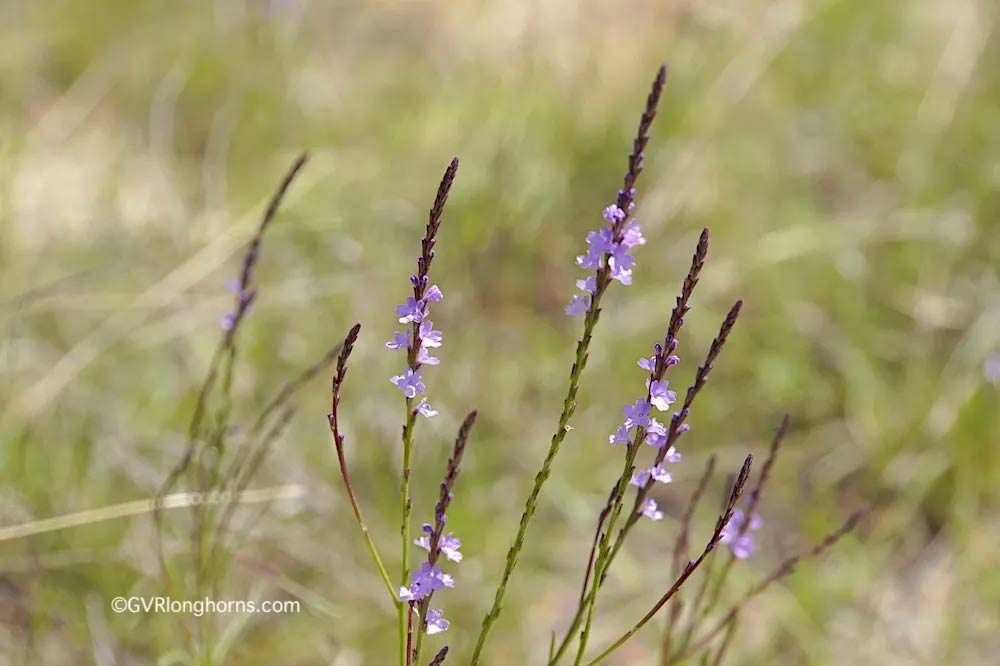
As a medicine, research is limited. Caution in using vervain is suggested as it is known to cause adverse affects in some people and in association with some medications that control blood pressure and hormone therapy. Even so, the medicinal effects seem vast covering an array of ailments some of which include use as an anti inflammatory, pain relief, relaxant, and digestive issues.
3. Drummond’s Skullcap
Scutellaria drummondii
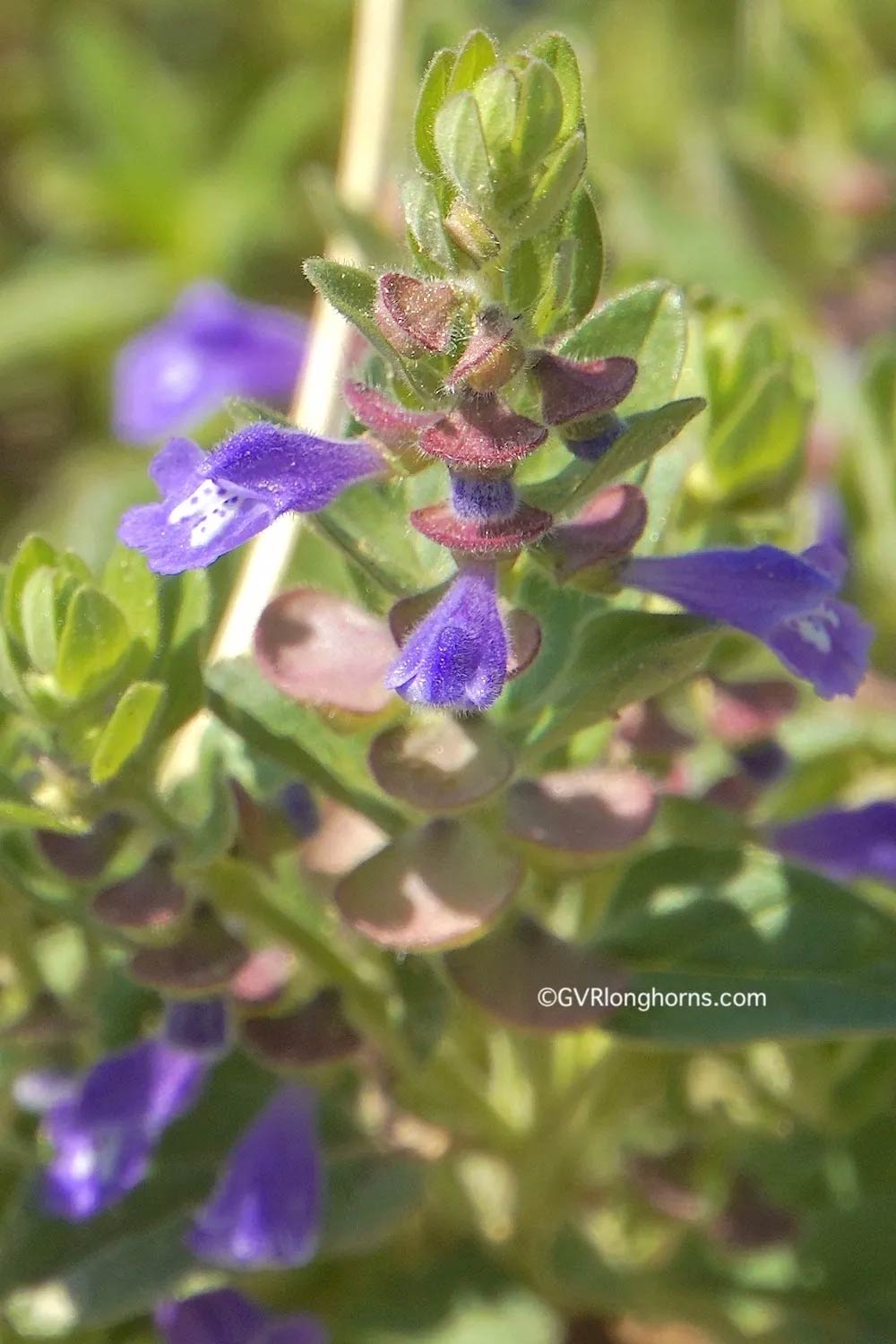
In 1833 Drummond arrived in Texas where he spent almost a year collecting samples of different species.
He travelled between Galveston Island and Edwards Plateau.
As Edwards Plateau region includes Erath County it would be nice to assume that Drummond walked the paths close by Green Valley Ranch.
Who knows, perhaps his specimen of the Drummond’s Skullcap came from here but even if it didn’t its quite amazing to know that Drummond’s samplings were the first made in Texas to be distributed worldwide to museums and the likes.

4. Catchfly Prairie Gentian
Eustoma exaltatum
Often referred to as the Texas Bluebell. It is not seen as often as it used to be seen because of its popularity as a cut flower. However, it is not rare and there are a number of varieties and areas where the Catchfly Prairie Gentian grows, notably in Brenham, Texas where Blue Bell Creamery is – hence the name!
However, Catchfly Prairie Gentian is not actually a bell flower but belongs to the family of Gentiana.
The name Gentiana honors Gentius, an Illyrian king who is said to have discovered the plants’ medicinal properties although there is evidence that the plants many herbal qualities were known and used before his time. It tastes bitter but has a digestive aiding effect and is used in cocktail bitters.
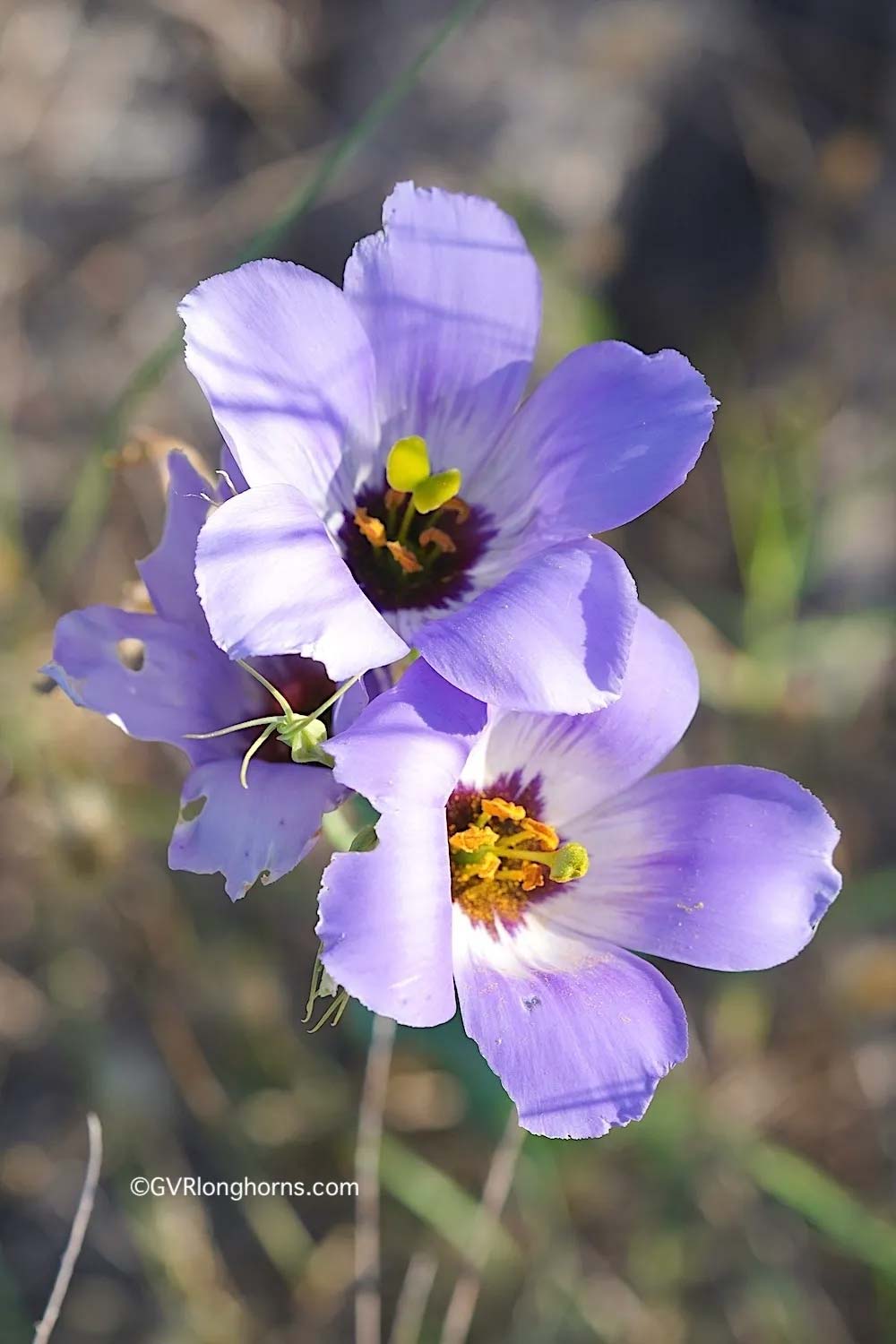
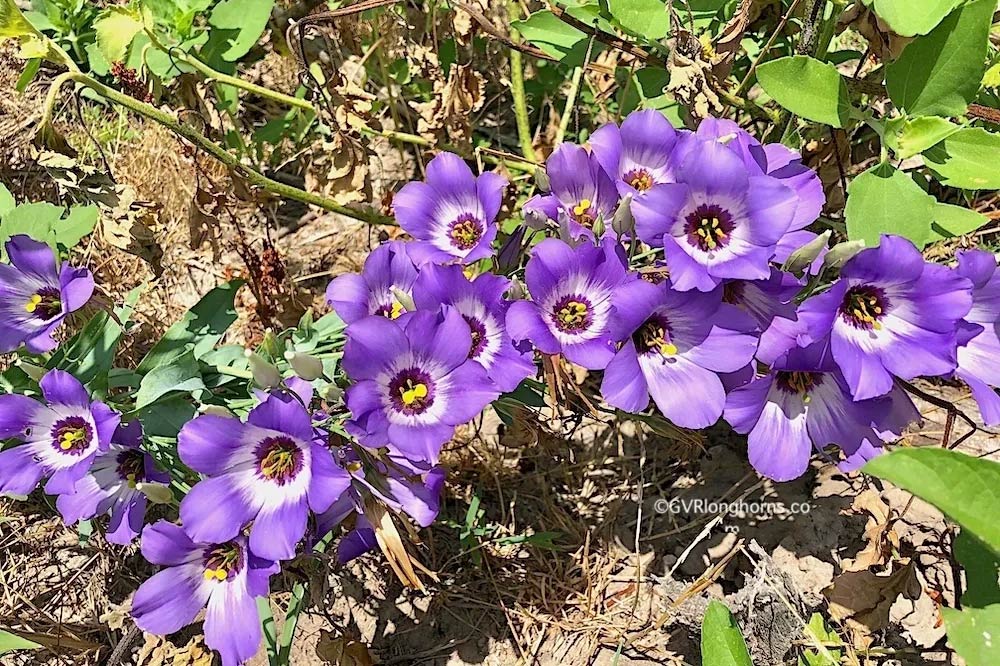
There are many cool myths, legends and stories relating to this plant that we will save for another blog. One last anecdote worth mentioning relates to Gentian Violet, anti inflammatory drops used to ease skin cuts and abrasions, and one I opened my mouth to liberally as a kid to ease tooth ache or mouth sores. If you did the same you may be interested to know that apparently, the name ‘Gentian Violet’ is not linked to the medical properties of the Gentian but to the purply color of the drops’ dye which in fact has been more recently questioned in regard to cancer risks.

It is true that their name hints at their purple appearance. According to the Lady Bird Johnson Wildflower Center, the Spanish name for Verbena is Moradilla, which translated means ‘little purple one’.The flowers tend to be more lavendar and purple than true blue but in some light you’d be hard to distinguish purple from the blue.

6. Blue Eyed Grass
Sisyrinchian
It is pretty but it’s not a grass and it’s “eye” is yellow, not blue as its name suggests!
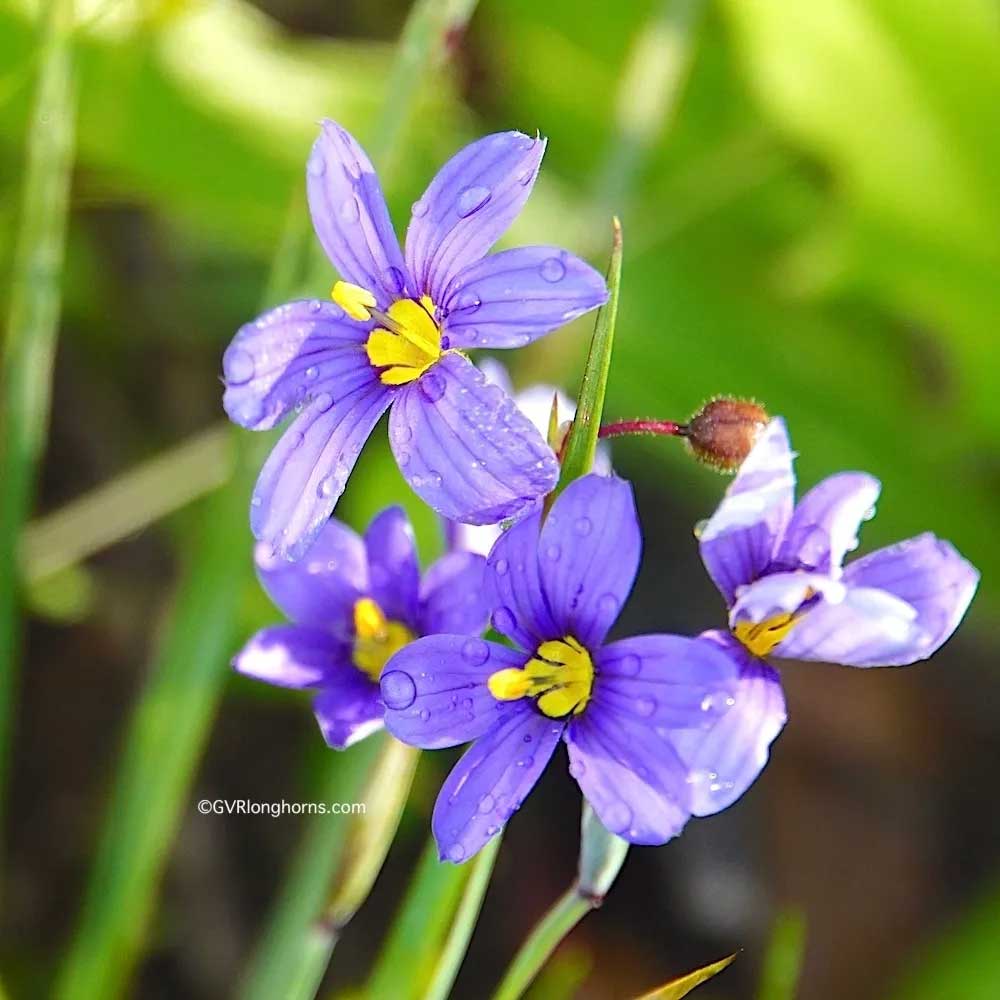
Apparently the leaves of Blue eyed grass is edible once cooked.
To Conclude
What is one person’s wildflower could be another’s weed. To be honest, our perspective changes depending on where these colors pop up. We love native Texas wildflowers, but not in our hay fields. They are beautiful for sure, and in many ways, they are necessary. There are so many different varieties of flowers, its a challenge to keep up with all of them. We are fortunate that in all our years of owning Texas longhorns we have not encountered toxicity within our herd. Even so, wildflowers can be a hazard to our Texas longhorn cattle herd and we feel it is beneficial to known the potential risks.
References:-
Lady Bird Johnson Wildlife Center
https://www.healthyhildegard.com/hildegard-of-bingen-biography/
https://flawildflowers.org/flower-friday-amsonia-ciliata/
http://johnwagman.com/rgvnp/Bluebell%20Gentian%20-%20Eustoma%20exaltatum/
https://www.uaex.edu/yard-garden/resource-library/plant-week/arkansas-blue-star.aspx
Plant Lore, Legends and Lyrics: Richard Folkart
http://gentian.rutgers.edu/gentians.htm
http://montana.plant-life.org/cgi-bin/species03.cgi?Iridaceae_Sisyrinchiummontanum
Disclaimer: All material noted above is based on our hands- on experience as ranchers, as well as our observations of our own cattle over the years. We have done and continue to do extensive research in order to maintain our herd‘s optimum health. However, all opinions and statements made on our website are meant as guidelines only. We are not qualified statisticians/ veterinarians and urge you to consult a specialist with your concerns. Content of this blog belongs to GVR Longhorns LLC and may not be copied in any form. ©GVRlonghorns.com All rights reserved.
